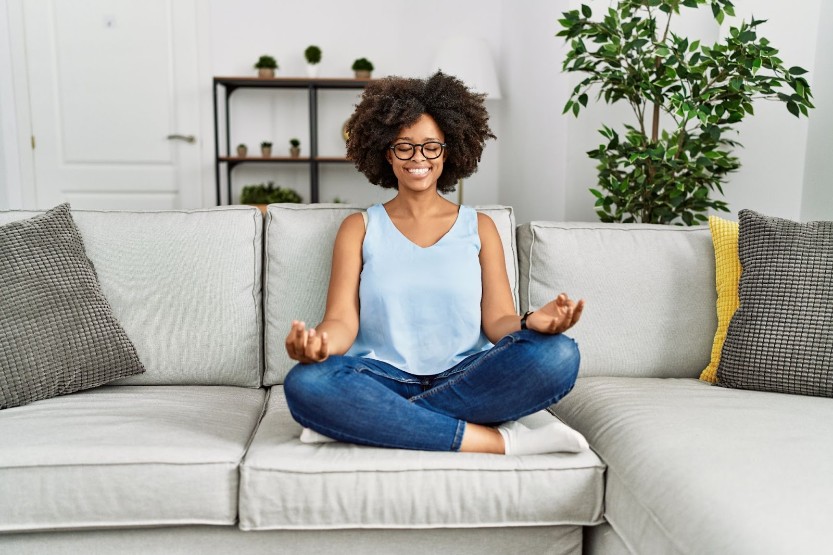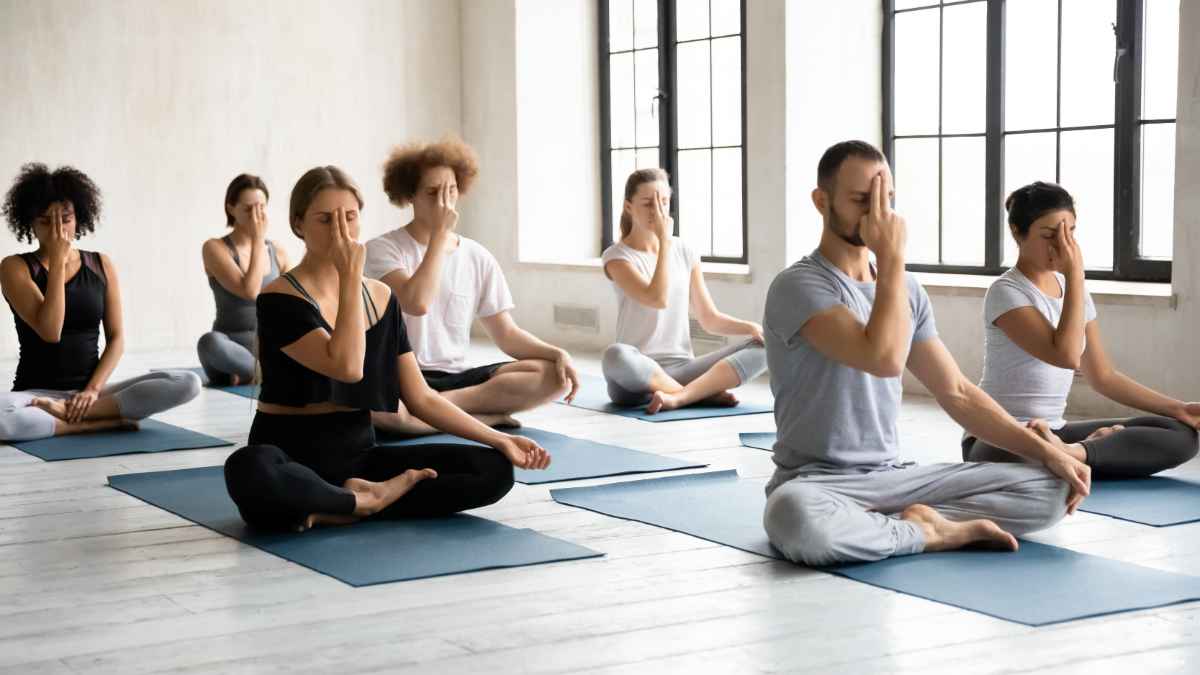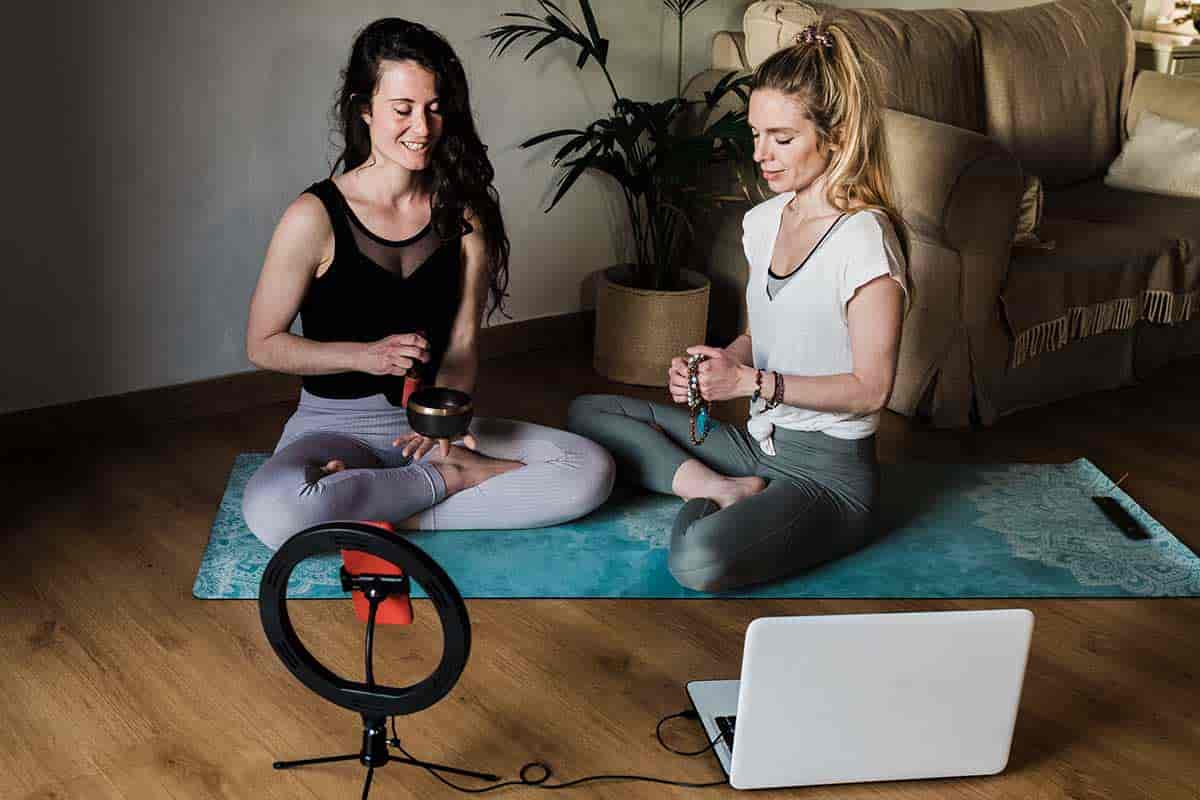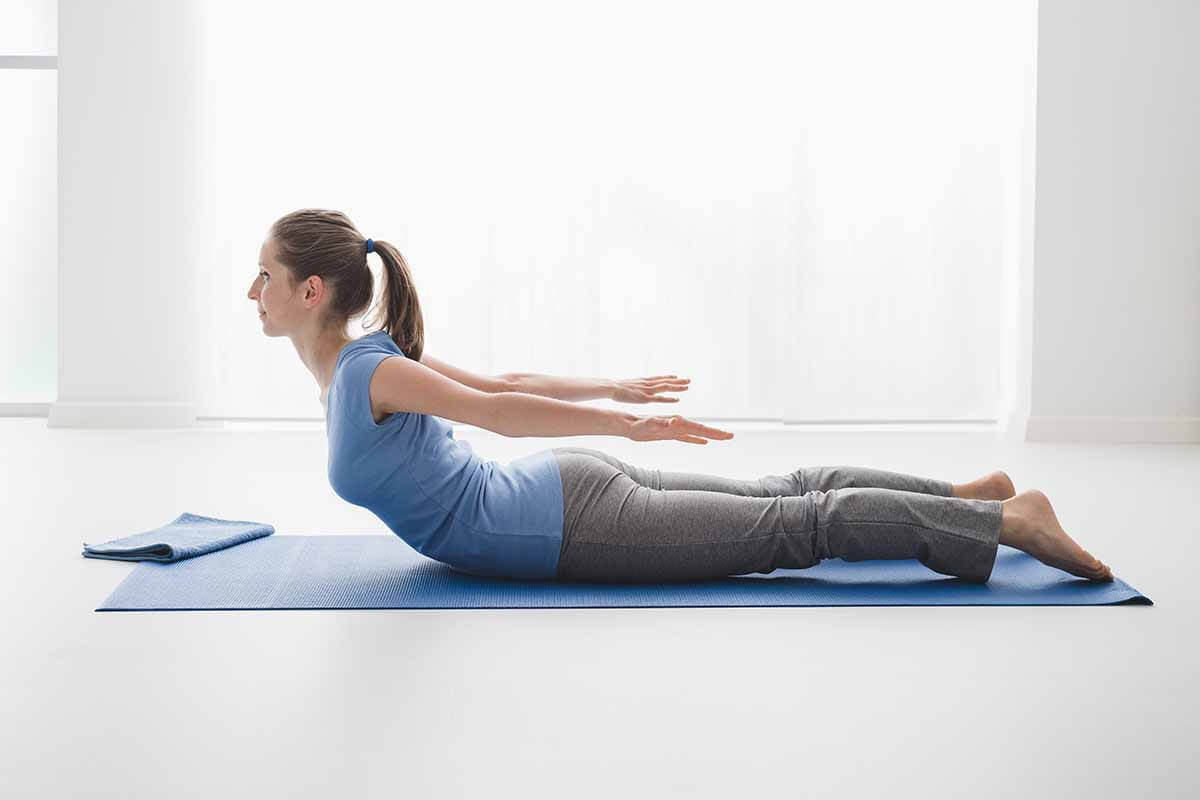
oga is an ancient practice that still widely popular today. Not only is it a great form of physical exercise but it’s also restorative, meditative and relaxing. Most people practice yoga as a way to feel more grounded and centered in the midst of hectic schedules and anxiety. Yoga also builds strength and helps you to increase your flexibility. There are many different types or forms of yoga but one of the most commonly practiced forms is Yin Yoga. So, what exactly is Yin Yoga?
Yin Yoga is a slow-paced form of yoga in which you hold the postures or asanas for a longer period of time. It focuses on targeting the deep connective tissues in your body such as ligaments, joints, bones and fascia. Yin yoga combines aspects of Chinese medicine and philosophy which are rooted in the belief of Qi.
The effects of yin yoga can be compared to acupuncture and acupressure because of its deeply restorative nature. Yin yoga’s deep stretching positions makes it more introspective and helps you to release negative energy both in your mind and body as you open up your flow of Qi. You can practice yin yoga as a homeopathic way to alleviate aches and pains in your connective tissue and joints and even detox your body.
Article Topics
What Qualifies as a Yin Yoga Pose?
Yin Yoga poses are typically carried out from a seated or lying down position. They are passive postures which means you don’t switch rapidly between poses. Every movement is slow, gentle and controlled with deep breathing being a major attribute.
Yin yoga poses are also very therapeutic for incorporating deep breathing into the poses so that they can be held for a longer period of time. The core of a yin yoga asana is to stretch rarely used connective tissues which can hold on to a lot of stress in the body, thus causing inflexibility and pain.
Yin yoga poses target these tissues and ligaments to become more pliable and restore optimal function. Yin yoga helps with joint mobility and aches and pains from DOMS, chronic pain conditions or certain injuries that prevent more rigorous forms of exercise.
What’s the Difference Between Yin and Yang Yoga Poses?
Where there is Yin, there is Yang. The majority of yoga studios teach yang yoga which is the polar opposite of yin. Yang postures are fast paced, raises your heart rate and makes you sweat. It’s a vigorous and high intensity practice.
Ashtanga, Vinyasa and Bikram yoga are perfect examples of yang yoga practices which target raising your heart rate and working your muscles. Yang yoga can be effective for weight loss with heightened levels of intensity with rigorous and frequent sessions. Yin yoga can be added on to a yang yoga sequence as a cool down or for muscle recovery days in between intense training.
The transition time between yang poses is much faster than with yin asanas and poses are not held for a long period of time. Yin and yang complement each other and create a great balance as forms of physical exercise and body conditioning. Yang puts your body to work, while yin restores and heals.
The 10 Most Common Yin Yoga Poses
Pose 1 – Child’s Pose
Child’s pose is a beginner friendly and relaxing pose. It stretches your lower back, hips, knees, ankles and upper back. It also relaxes your spine. To perform this posture, you sit with your knees folded and shins and ankles against the mat. Sit back into your heels and gently stretch your arms and torso forward to rest on the mat. To make this even more relaxing, place a bolster and place it between your legs and fold forward onto it.
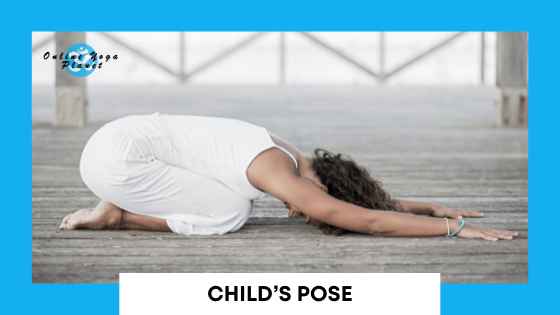
Pose 2 – Sleeping Pigeon Pose
If you have sciatica pain, sleeping pigeon is the ideal yin yoga asana to help bring you relief. Start on all fours then lift your right leg and rest your shin towards the front of the mat. Push your knee gently out towards the right with your foot positioned close to your pelvis. Stretch you left leg out behind you as straight as possible and sink don into the pose with arms and head folded over your right knee.
You can use a yoga block or bolster to pace under your sitting bone if needed. Repeat on the other side. This stretch helps to release the tensions in your sciatic area and piriformis nerve. You can almost immediately feel the release as you sink deeper into the pose.
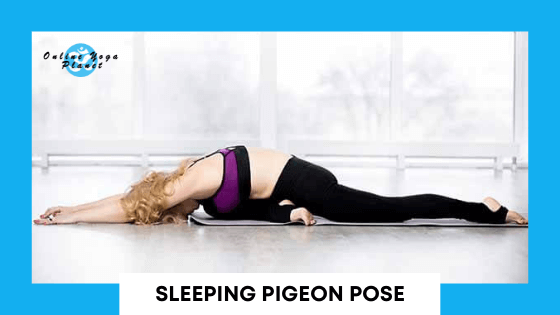
Pose 3 – Supported Bridge Pose
Lie on the mat with your knees bent and feet close to your butt. With arms at your sides, gently lift up into a glute bridge and hold. Place a yoga black under your sacrum or right above your butt and relax unto it with shoulders planted on the mat. This position will help stretch your back and your glutes.
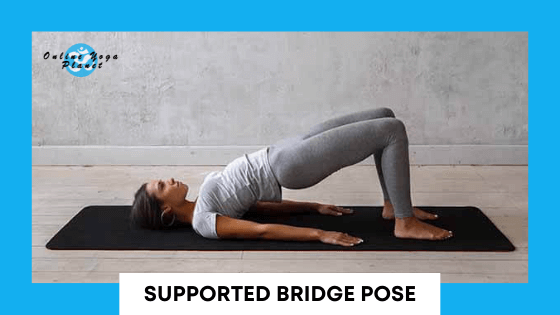
Pose 4 – Butterfly Pose
To stretch your inner adductors and outer hips, butterfly is a common yin yoga asana that yogis endorse. From a seated position, bring your feet together and widen your knees. Think about pressing your knees to the floor in this open position. You can pull your feet closer to your body or push further away to feel the stretch. To make it more relaxing, lean forward unto a bolster propped up with yoga blocks.
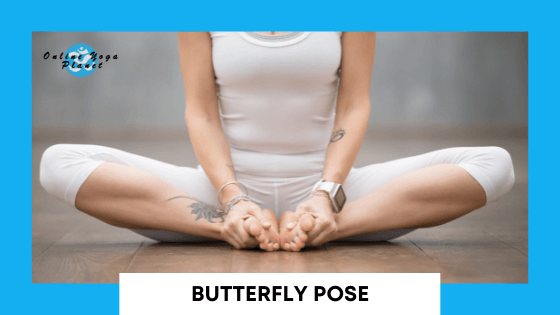
Pose 5 – Supine Spinal Twist
This pose stretches your oblique abdominal muscles. Lie down on your back on a mat or other padded surface. Pull your right knee up to your chest. Then, place your left hand on your right knee to pull your knee up and over your body to the left side. Gently twist your torso. Keep both shoulders on the mat, extend your arms to the sides and take deep breaths. Turn your head towards the opposite direction of your bent knee. Repeat on the other side.
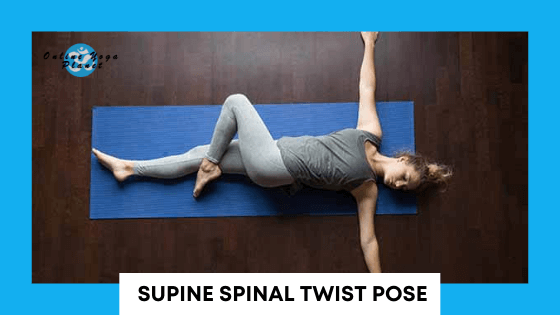
Pose 6 – Thread the Needle Pose
If you sit a desk for most of the day, this yin yoga pose helps to undo the damage to your posture from hunching over. Starting on all fours, gently bring one arm forward as you stretch the other arm under you while twisting your torso in the same direction. Let you shoulder rest on the mat and relax into the stretch. You will feel your upper back, shoulders and neck thanking you for relieving the tension. Repeat on the other side for a full upper body deep stretch.
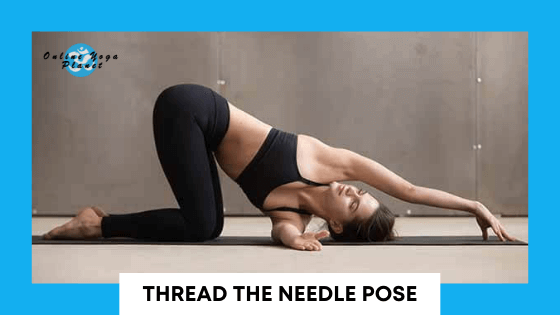
Pose 7 – Seated Cat Cow
Seated cat cow is a yin yoga pose that aims to gently stretch your spinal vertebrae and lengthen them for a soothing massage. Sit on your mat in a cross-legged position. Place your hands on your knees and sit up tall with your back straight and ground yourself on your sit bones. Inhale and arch your back and slightly lean forward with your heart center and look up. Exhale and round your back and bring your head down to look at your navel, slowly and controlled. Repeat the inhale and exhale movements for a few times going deeper with each breath.
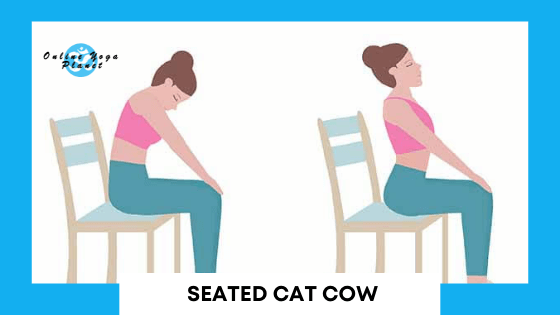
Pose 8 – Legs Up Against the Wall
This is perhaps one of the easiest yin yoga poses you can incorporate into your day or night time routine. If you have a clear space on you wall, lie down with your legs pointed up. Bring your butt as close to the wall as you can until you can rest your feet and legs up against it. You can lie down with your legs straight and together against the wall or try a straddle split as a variation for a different kind of leg stretch. You can also try this against any sturdy, vertical surface such as your bed headboard, a closet or couch.
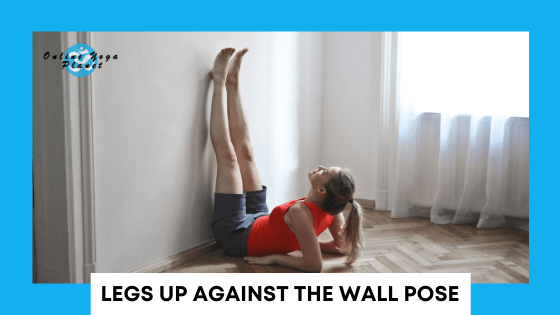
Pose 9 – Forward Fold
If you have tight hamstrings and claves, forward fold can help you to regain suppleness in these areas as well as your lower back. Sit up tall with your legs stretch long in front of you, facing forward. Then lean your torso down over your thighs. Go as deep as you can, as if to touch your knees with your face. If you are not very flexible, use a bolster and rest it on top your thighs. Simply lean over it and rest against the bolster. Flex and point your toes as needed to stretch the fine tendons on your feet and ankles in this pose.
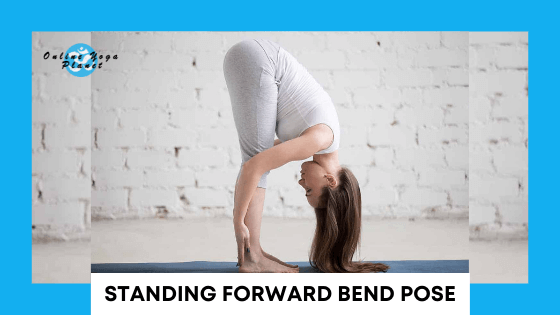
Pose 10 – Corpse Pose (savasana)
The best way to end any yoga practice or cool down routine is with corpse pose. This pose is so simple, you may even do it without knowing every day. Corpse pose also called savasana is performed while laying flat on your back with your arms relaxed at your sides. In this position, inhale and exhale deeply and slowly and let your body relax and release all tensions, almost like you are sinking into the floor.
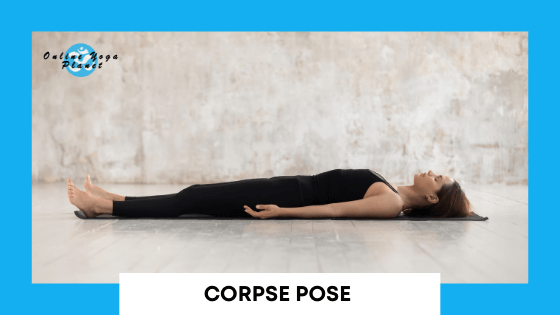
How Long Do You Hold Poses in Yin Yoga?
Yin Yoga is known for having longer holds in each pose. For beginners, 1 to 3 mins in each pose is sufficient to get an ample stretch to bring relief as you build flexibility and strength. The average yin yoga class may consist of practitioners holding poses for as long as 3 to 5 minutes each. Advanced yin yogis can hold yin yoga postures for as long as 20 to 25 minutes.
Restorative poses such as “legs up against the wall” or “corpse pose” can essentially be performed for as long as you want. Like with all forms of exercise, you need to tune in and listen to your body so you can determine your weak areas.
It’s important not to go into deep stretching without being properly warmed up. Slow, guided movements and sufficient breaths in and out will help you to warm up and sink into the poses with ease and comfort. This may take time, therefore, the few minutes it takes to hold a pose might actually consist of different ranges of movement and flexibility.
Yin yoga is very versatile. This means that as your body adapts to the various movements you can hold the pose for however long your body allows. You can also time it based on how long you need to feel relaxed in the pose. Each person has different needs and possess different levels of flexibility. However, everyone should aspire to hold the poses a little bit longer each time to improve their flexibility as their bodies become more supple.
(Looking for a place to start learning Yin Yoga? Check out this Santosha Yoga Institute Review!)
Conclusion
Yoga is a practice that can be adopted by persons of all ages and backgrounds. For more adaptable yoga moves for your body, you can even try out adaptive yoga! For a more healing and restorative experience, yin yoga is recommended as it helps with concentration, meditation and deep breathing.
This is very useful if you experience anxiety or stress regularly and need to find a restorative balance. Stress has many negative effects on your body and exercises such as yoga can help a great deal to manage your stress. Yin yoga not only helps you to restore your mind but also your body. The long, deep stretches are comparable to deep tissue massage and acupuncture.
Yin yoga can be practiced as a standalone routine or added to end of more intense yoga or other types of high intensity workouts such as HIIT and cardio training. You can also use yin yoga poses when you wake up in the morning or before you go to bed at night to feel more relaxed.
If you are new to yoga, try yin yoga as your gateway to developing flexibility and strength to be able to perform more fast paced or advanced types of yoga. After a session of yin yoga you will feel lighter, taller, more supple and relaxed and full of confidence and contentment!
Learn how to teach yin yoga and many other types of yoga with yoga teacher training online!

